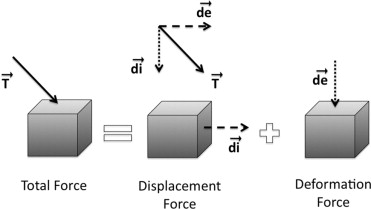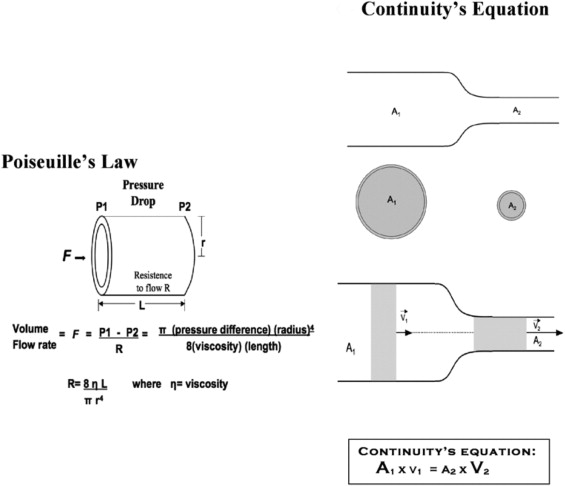Purpose
To summarize current concepts and recent data from the literature about different vitrectomy machines and small-gauge systems based on physical laws.
Design
Interpretive essay.
Methods
Review and synthesis of selected recent literature with interpretation and perspective.
Results
Pars plana vitrectomy can be performed with a wide variety of treatment strategies, for multiple diseases, and with different materials (solids and fluids). We discuss a variety of machines and system settings (peristaltic pump, duty cycle, aspiration, and infusion controls) targeting safer and the most effective surgery with detailed explanations of the physical properties.
Conclusions
Effective management of new surgical strategies is based on recognizing and addressing various physical characteristics in disease and ocular settings. Although the properties of machine are expanding, the long-term efficacy and safety of most new approaches have yet to be established in controlled clinical trials.
Vitrectomy has evolved dramatically over the past 4 decades, as research has led to an enhanced understanding of its benefits for many diseases. Current innovations suggested by manufacturers to permit faster and safer surgery are largely subjective assertions. Better lighting, improved optics, new adjuvant agents, increased fluidics control, or a combination of these may enhance surgical skills. A controlled clinical trial, although always the gold standard, would be difficult to perform because of multiple variables and the difficulty of randomization to different equipment pieces.
A rational modern vitrectomy approach with multiple fluidics settings requires a clear understanding of its physical behavior. Because of differences among vitrectomy machines, effective management is predicated on recognizing and addressing each factor in a given surgical setting. In this article, we discuss these issues from the perspective of the physical laws and recent medical literature to help surgeons better use the new technologies.
Basic Physical Laws
Continuum mechanics is a branch of mechanics that deals with analysis of the kinematics and the mechanical behavior of materials modeled as a continuum and the physical properties of solids and fluids.
Solid Materials
Solid mechanics is the branch of mechanics, physics, and mathematics that concerns the behavior of solid matter under external forces that results in deformation and displacement of a solid material ( Table 1 ). Solid material has a resting form, and the solid shape departs from the resting form in response to stress. The amount of departure from the resting shape is referred to as deformation . The proportion of deformation to the original size is called strain . A displacement field is an assignment of displacement vectors for all points in a body that is displaced from one state to another ( Figure 1 ).
| Continuum mechanics | Solid mechanics is the study of the physics of continuous solids with a defined resting shape. | Elasticity describes materials that return to their resting shapes after removal of an applied force. | |
| Plasticity describes materials that permanently deform (change their resting shape) after a sufficiently large applied force. | Rheology: given that some materials are viscoelastic (exhibiting a combination of elastic and viscous properties), the boundary between solid mechanics and fluid mechanics is blurry. | ||
| Fluid mechanics (fluid statics and fluid dynamics) studies the physics of fluids. |
| ||

Of note, vitreous is not a fluid; it is 98% liquid and 2% protein and glycosaminoglycans. The remainder of the solid matter consists of ions and low–molecular-weight solutes. The deformation force in this case is the quantitative measure of each fragment when passing through the cutter tubing. The displacement component results in movement of the vitreous block. Some other vitrectomy materials, such as lens fragments and clots, have solid characteristics.
Some definitions of the basic laws are needed for a better understanding of the vitreoretinal surgical procedure. Newton’s second law states that the displacement force of a solid is proportional to mass and acceleration ( F = ma ). Surge is defined as the explosive movement of a large mass with increased acceleration, which occurs immediately after solid flow obstruction. Traction, in mechanics, is the force per unit area on a surface.
Fluid Materials
Fluid mechanics is the study of how fluids move and the effect of forces on them. Fluids include liquids, gases, and plasmas. During vitrectomy, some materials are fluid (balanced saline solution [BSS], perfluorocarbon, dyes, syneretic vitreous, and air). Fluid mechanics can be divided into statics, the study of fluids at rest, and dynamics, and the discipline analyzes the motion of fluids. Important fluid concepts are required to study vitrectomy fluidics. The volumetric flow rate (also known as the volume flow rate or the rate of fluid flow) is the volume of fluid that passes through a given system per unit of time. The flow velocity in fluid dynamics, or velocity field, of a fluid is a vector field that is used to describe mathematically the motion of a fluid. The length of the flow velocity vector is the flow speed. The Poiseuille law defines the flow rate as directly related to the difference in pressure (in millimeters of mercury) and the radius raised to the fourth potency. The flow rate is related inversely to the viscosity and length of the system ( Figure 2 ). The continuity equation postulates that, for a volume unit, area multiplied by velocity in a continuous tube always has the same value ( Figure 2 ).

Classification of Pars Plana Vitrectomy Substances
Sabersky and associates described a fluid as a substance that, when at rest, cannot sustain shear force (that is, a force exerted tangentially to the surface on which it acts). Fox and associates classified a solid as a material that, when subjected to force, was characterized by nonuniform deformation. We showed experimentally the characteristics of vitreous solid and BSS. It is necessary to account for the solid properties of the vitreous to understand its unique fluidics to reduce retinal tractional forces during vitrectomy. Of course, during syneresis, vitreous could have fluid properties, but this kind of material theoretically may have less potential to cause retinal tears. The vitrectomy hand piece may be used in both situations: solids (vitreous, lens fragments, clots) and fluids (BSS, perfluorocarbon, dyes, syneretic vitreous).
New Machine Settings
Duty Cycle and High-Speed Cut Rates as Traction Control Parameters
The duty cycle is the percentage of time that the probe port is open divided by the duration of the entire cycle. The different driving mechanisms (pneumatic/coil, electric, and double pneumatic) produce various duty cycle curves and cycle rates. 9 Many reports with multiple methods describing pneumatic/coil probes have a low duty cycle in high cutting velocities (0.61 at 600 cycles per minute [cpm] and 0.31 at 1500 cpm) compared with electric (0.49 at 600 cpm and 0.51 at 1500 cpm) and double pneumatic (0.56 at 600 cpm and 0.42 at 1500 cpm) probes.
Flow rates depend on many variables, such as aspiration rates, system sizes, and duty cycles. The duty cycle is an important tool to control flow. In surgical situations in which increased flow is needed, for example, when using dyes or removing unclotted blood, a low duty cycle makes performing these steps easier. Although low duty cycles make a difference in the flow rate, a question arises about the real impact of traction.
During cutting, a vitreous fragment can be attached to the residual vitreous block and sometimes to the retina. When the port opens, the cutter aspirates a portion of the vitreous block, causing traction on the surrounding tissue, which is the real traction that can cause retinal tears. An ideal cutter would cause less traumatic vitreous removal, leading to decreased force on the surface of the residual vitreous block surface.
The force applied to a solid vitreous fragment is divided into displacement and deformation ( Figure 1 ). Furthermore, as the cutting rate of the vitrectomy hand piece increases (at a constant flow rate), the amount of vitreous pulled into the cutter during each cut decreases. The pieces of vitreous being cut become smaller and are pulled continuously into the cutter port because of decreased deformation forces. New machines provide the option to decrease the duty cycle (another tool to decrease the size of vitreous fragments). A faster cut rate facilitates smoother vitrectomy with less flow obstruction and vitreous surge. Surge is a movement of unpredictable increased mass and acceleration (Newton’s second law, F = ma ) that theoretically could cause retinal tears. This dangerous movement also occurs with lower aspiration rates (decreased flow) associated with small cut rates (increased obstruction), which can demonstrate the difference between flow and traction. In the move toward less surge during vitrectomy, some new systems increase the cutting velocity and achieve less flow obstruction, which results in a more predictable vitrectomy with less chance of dangerous surge.
Another new machine setting facilitates surgery with a decreased duty cycle (eg, 25%) and allows very small-fragment vitrectomy to be performed. When force (traction) is applied to a vitreous fragment, an immediate counter force is exerted by the surface attached to the adjacent vitreous block and retina that may cause tears. Decreased fragment size potentially can cause a high punctual force (distributed over a smaller surface), however, with less total force ( F = ma ) and deformation force potential ( Table 2 , Figure 3 ). Decreased duty cycle vitrectomy may not necessarily result in safer removal of the vitreous. More studies are needed to confirm this hypothesis.



